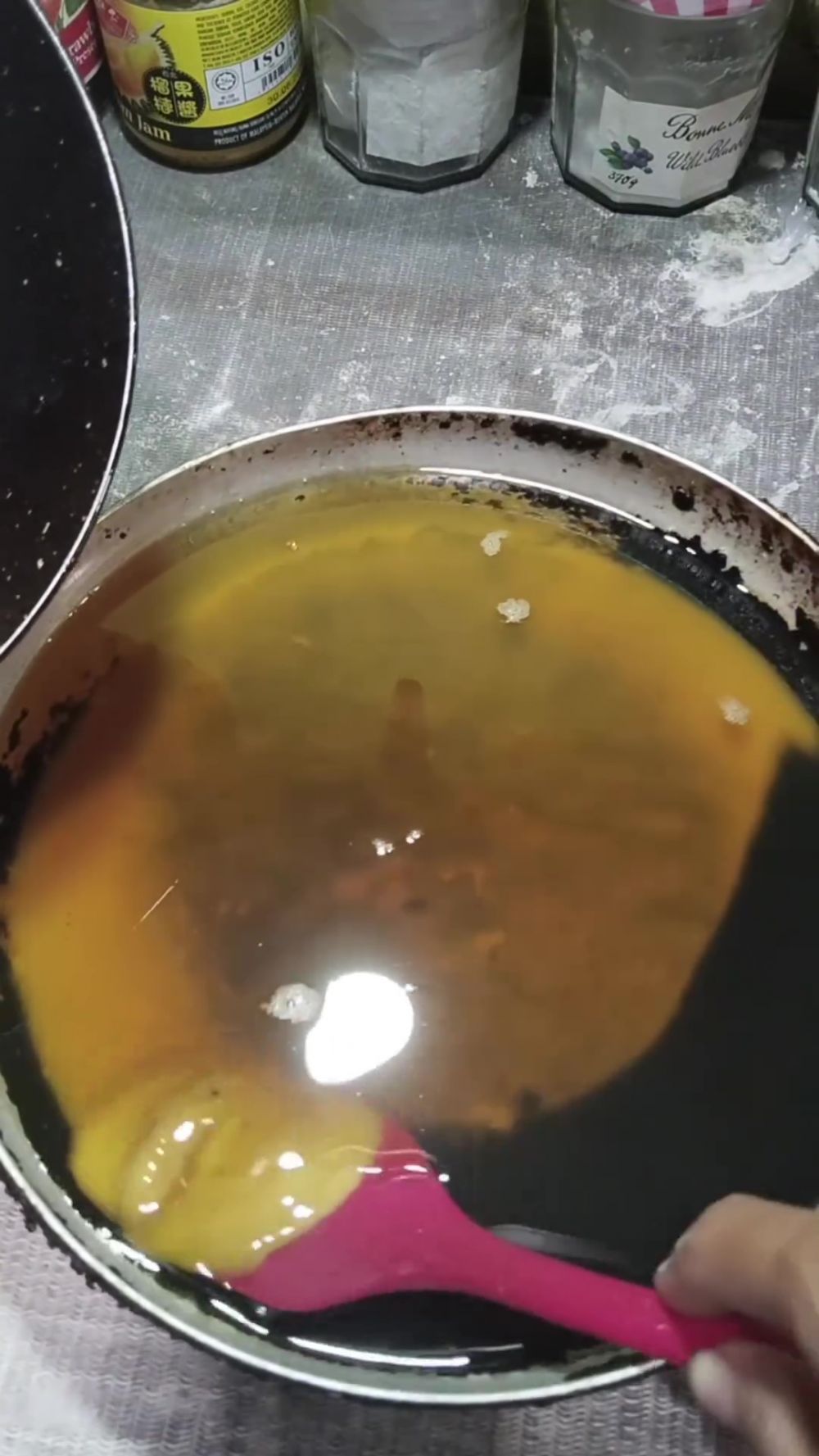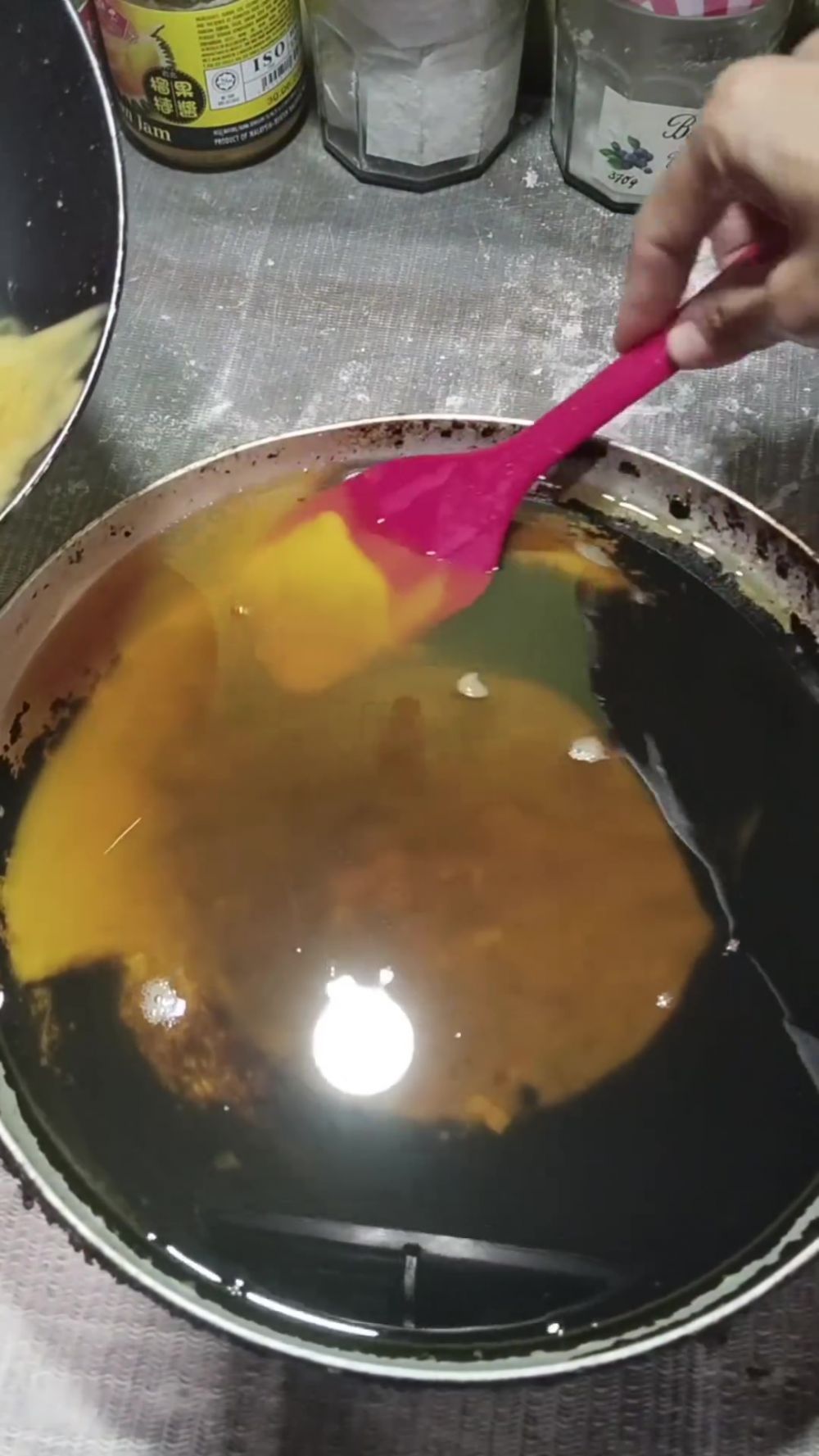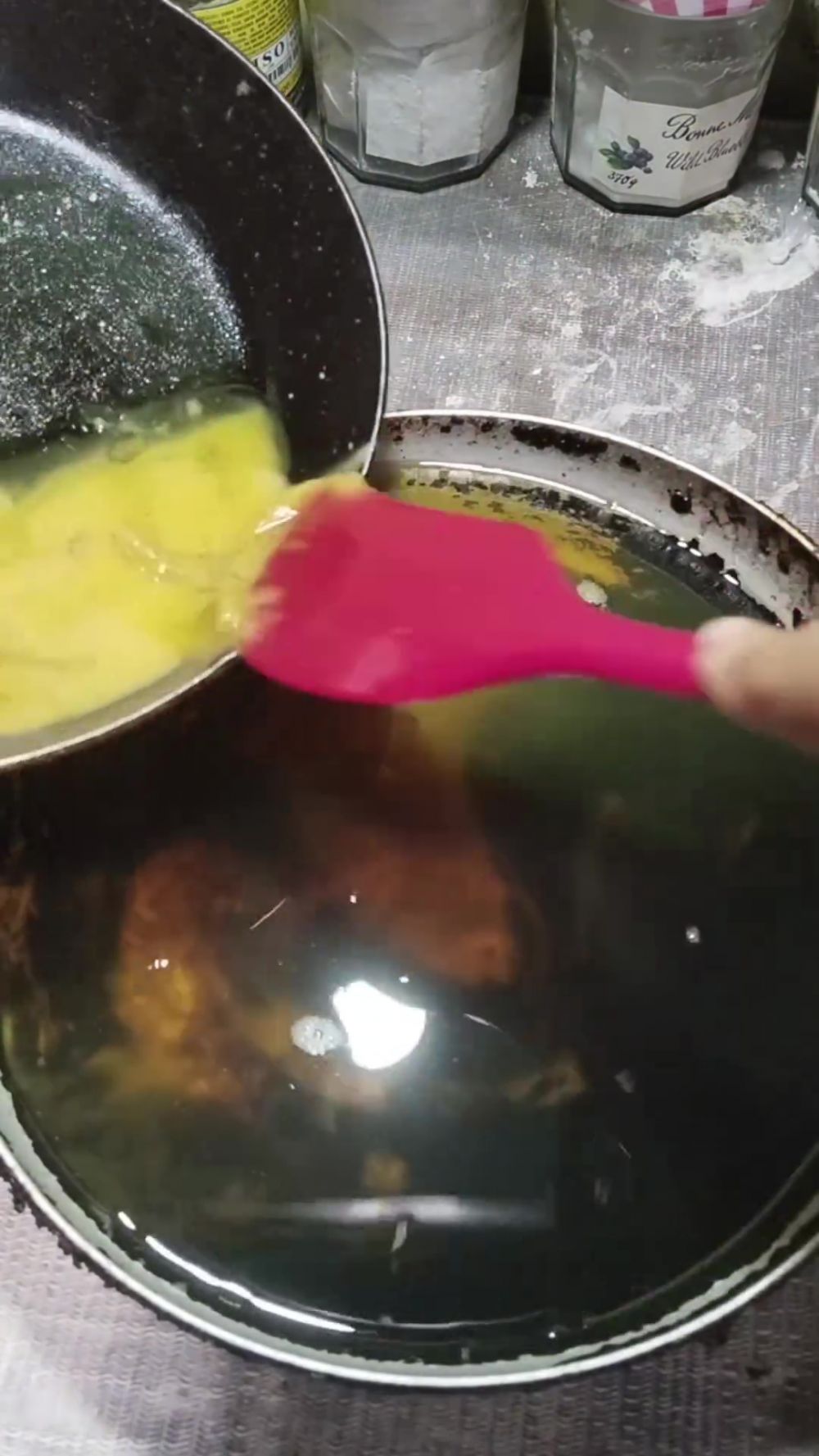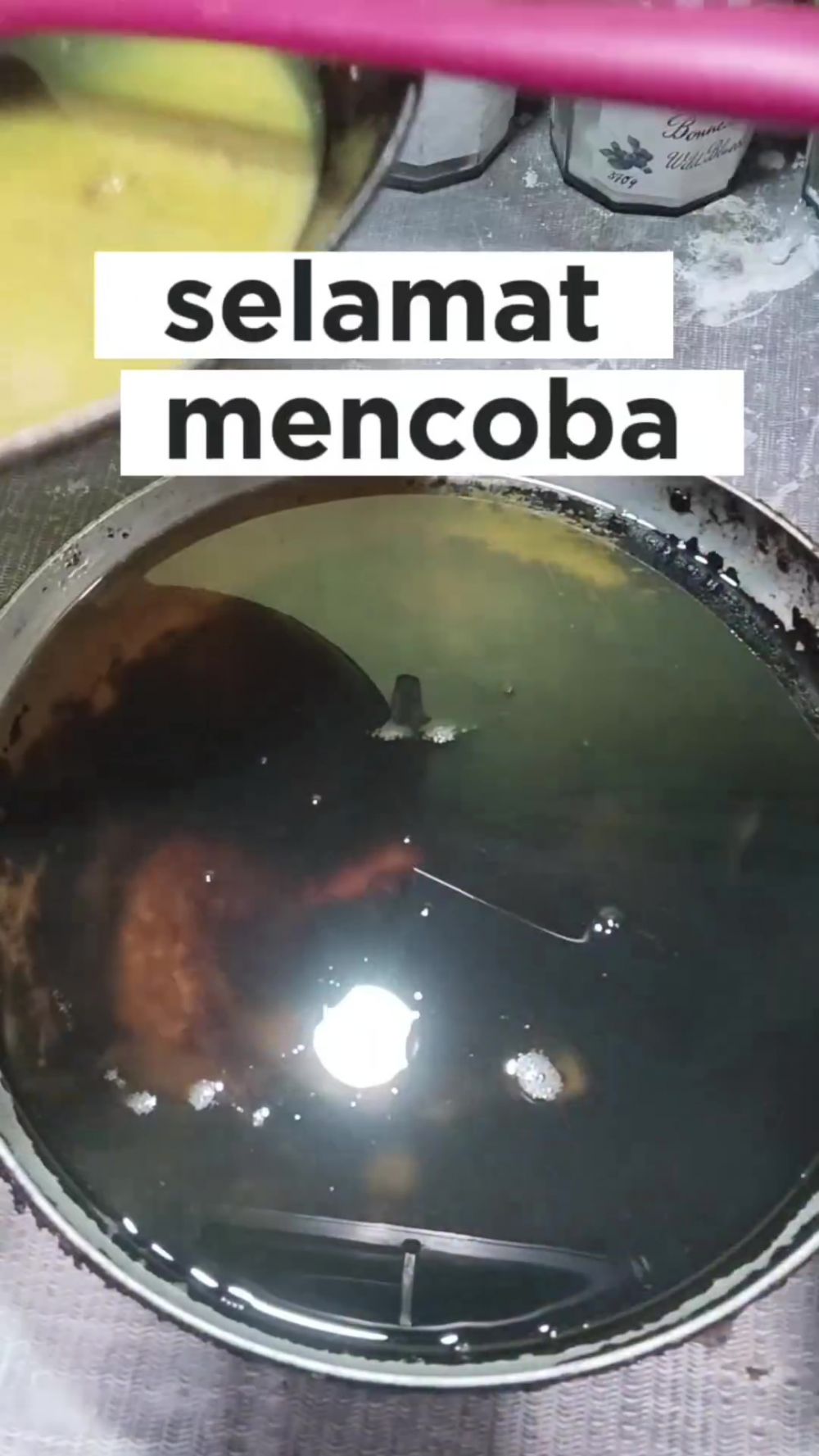photo: Instagram/@karmilahmielda
Brilio.net – Flour foods with a crispy texture are always a favorite of many people. From fried chicken, crispy tempeh, to light snacks, everything tastes better when fried until golden and crispy on the outside. The “crunching” sound that is heard when bitten seems to be a satisfaction in itself that makes it difficult for anyone to stop eating.
However, behind this deliciousness, there is a challenge that is often faced during the frying process. When the flour mixture enters the hot oil, some of the flour layer may come off and fall to the bottom of the pan. The remaining flour then settles, burns, and makes the oil become cloudy quickly, and even emits an unpleasant aroma if used repeatedly.
In fact, cooking oil that is still clear in color can actually still be used again. Unfortunately, because there are starch deposits in it, the oil has to be filtered many times to make it clear again. This process certainly takes time and energy, especially if you often fry in large quantities.
Even though you know what? There are other ways that can be used to remove oil deposits without filtering or even pouring. Yup! This has been proven directly by Instagram user @karmilahmielda in one of the uploaded videos.
Check out the tutorial for more details BrilioFood summarized from Instagram @karmilahmielda on Thursday (13/11).
How to remove powdery deposits from used oil.
1. Let the oil cool first.

Photo: Instagram/@karmilahmielda
After you’ve finished frying, don’t rush to filter the oil. Let it sit for a few moments until the oil temperature has completely dropped and the remaining flour begins to settle at the bottom of the pan. This process is important so that the sediment can be completely separated from the oil, so it will be easier to clean without wasting the oil.
2. Scrape gently with a thin spatula.

Photo: Instagram/@karmilahmielda
When the oil is cold, take a spatula with a thin and wide tip. Gently scoop out any sediment stuck to the bottom of the pan so as not to stir the oil to the top again. The thin tip of the spatula helps to reach the bottom of the pan more precisely without mixing the oil into the sediment.
3. Take advantage of the mass difference between oil and flour.

Photo: Instagram/@karmilahmielda
Flour sediment has a heavier mass than oil, so it automatically settles to the bottom. When you move the spatula, the remaining flour will stick easily without taking up much oil. That way, the cleaning process becomes more efficient and you don’t need to filter the oil repeatedly.
4. Transfer the sediment to another container.

Photo: Instagram/@karmilahmielda
Once successfully removed, transfer the flour deposits to a separate container such as a small bowl or used container. Make sure there are no burnt bits left at the bottom of the pan as this can affect the color and aroma of the oil when used again. Do this process slowly until the bottom of the pan looks clean of sediment.
5. Reuse clean oil.

Photo: Instagram/@karmilahmielda
If the bottom of the pan is free of sediment, you can immediately use the oil again for frying. The fried food remains clear and does not burn because it is not mixed with old flour flakes. This simple method can help you save oil without sacrificing the taste and appearance of your food.
FAQ Regarding tips for eliminating odors in used oil.
Used oil often leaves an unpleasant odor, especially if it was previously used for frying fish, chicken or strongly seasoned foods. But don’t worry, there are several simple ways that can help get rid of the smell of oil without having to throw it away straight away.
1. Why does used oil smell rancid?
A rancid odor occurs because the oil is exposed to heat repeatedly so that the fat structure is damaged and oxidized. Leftover food, flour, or burnt spices in the oil can also accelerate the appearance of unpleasant odors.
2. Can the smell of used oil be removed with natural ingredients?
Very possible. You can add a little chopped ginger, pandan leaves, or orange peel to the filtered oil, then heat it briefly. These natural ingredients help absorb unpleasant aromas and make the oil more neutral in smell.
3. Can charcoal help remove the odor in used cooking oil?
Yes, activated charcoal is known to be effective in absorbing odors and remaining dirt in oil. Simply place a small piece of clean charcoal in cold oil, let it sit for a few hours, then strain before using again.
4. How do you store used oil so it doesn’t smell?
Store the oil in a tightly closed container, avoid direct sunlight, and place it in a cool place. Light and air can speed up the oxidation process which causes oil to quickly go rancid and smell.
5. Is used oil that still smells safe to use again?
Not recommended. If after cleaning and filtering the smell is still strong or the color turns too dark, it is better not to use it again. Oil like this has lost its quality and can affect the taste and aroma of fried food.
(brl/is)
News
Berita
News Flash
Blog
Technology
Sports
Sport
Football
Tips
Finance
Berita Terkini
Berita Terbaru
Berita Kekinian
News
Berita Terkini
Olahraga
Pasang Internet Myrepublic
Jasa Import China
Jasa Import Door to Door
Comments are closed, but trackbacks and pingbacks are open.